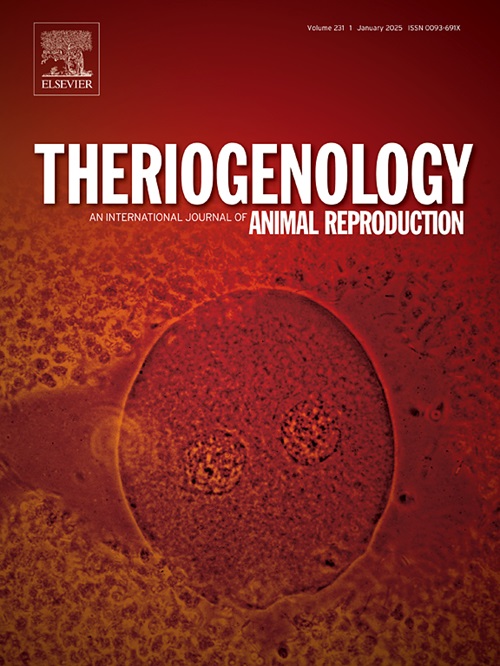在- 80°C低温保存影响精子的完整性和生育能力,以小鼠品系依赖的方式
IF 2.4
2区 农林科学
Q3 REPRODUCTIVE BIOLOGY
引用次数: 0
摘要
我们之前开发了一种简单的方法,将B6N精子冷冻保存在- 80°C,而不是使用液氮(LN2),长达一年而不会对生育产生不利影响。本研究的目的是测试该方法在六种不同小鼠品系(129/SvImJCnrm;129年,C57BL / 6 jcnrm;B6J C57BL / 6 ntaccnrm;B6N BALB / cByJCnrm;Crl BALB / c: CD1 (ICR);CD-1和FVBN/JCnrm;FVB)。在长达一年的不同时间点,我们评估了冷冻保存和保存在−80°C的精子的完整性和生育能力,并与经典LN2方法进行了比较。1年后,129、B6N、CD-1和FVB菌株的体外受精(IVF)率和死亡精子数无差异。相比之下,B6J和BALB/c的精子在−80°c低温保存3个月(BALB/c)和6个月(B6J)后,体外受精率显著降低,死亡精子数量增加,形态异常增加。在−80°C条件下,1个月后,所有菌株的精子总活力下降,−80°C组的超微结构损伤增加。结果表明,129、B6N、CD-1和FVB的精子可以在−80℃低温保存至少1年而不影响其生育能力。而来自B6J和BALB/c的精子对温度最敏感。因此,129、B6N、CD-1和FVB菌株在−80℃下低温保存和储存长达一年是可行的,从而避免了LN2的使用。本文章由计算机程序翻译,如有差异,请以英文原文为准。
Cryopreservation at −80 °C impacts sperm integrity and fertility in a mouse strain-dependent manner
We previously developed a simple method to cryopreserve and maintain B6N spermatozoa at −80 °C, instead of using liquid nitrogen (LN2), for up to one year without detrimental effects on fertility. The goal of the present study was to test the efficacy of this method in six different mouse strains (129/SvImJCnrm; 129, C57BL/6JCnrm; B6J, C57BL/6NTacCnrm; B6N, BALB/cByJCnrm; BALB/c, Crl:CD1(ICR); CD-1, and FVBN/JCnrm; FVB). At different time points up to one year, we evaluated the integrity and the fertility of the spermatozoa cryopreserved and stored at −80 °C in comparison to the classical LN2 method. After 1 year, no differences in the in vitro fertilisation (IVF) rate and in the number of dead spermatozoa were observed in 129, B6N, CD-1 and FVB strains. In contrast, spermatozoa from B6J and BALB/c cryopreserved at −80 °C showed a significant reduction in the IVF rate, an increased number of dead spermatozoa and increased morphological abnormalities after 3 months (BALB/c) and 6 months (B6J). In all strains, the total sperm motility decreased after 1 month at −80 °C and increased ultrastructural damage was found in the −80 °C group. The present results indicate that spermatozoa from 129, B6N, CD-1 and FVB can be cryopreserved and stored at −80 °C for at least one year without impacting their fertility. However, spermatozoa from B6J and BALB/c are the most sensitive to temperature. Therefore, cryopreservation and storage of 129, B6N, CD-1 and FVB strains at −80 °C for up to one year is feasible, thereby circumventing the use of LN2.
求助全文
通过发布文献求助,成功后即可免费获取论文全文。
去求助
来源期刊

Theriogenology
农林科学-生殖生物学
CiteScore
5.50
自引率
14.30%
发文量
387
审稿时长
72 days
期刊介绍:
Theriogenology provides an international forum for researchers, clinicians, and industry professionals in animal reproductive biology. This acclaimed journal publishes articles on a wide range of topics in reproductive and developmental biology, of domestic mammal, avian, and aquatic species as well as wild species which are the object of veterinary care in research or conservation programs.
 求助内容:
求助内容: 应助结果提醒方式:
应助结果提醒方式:


